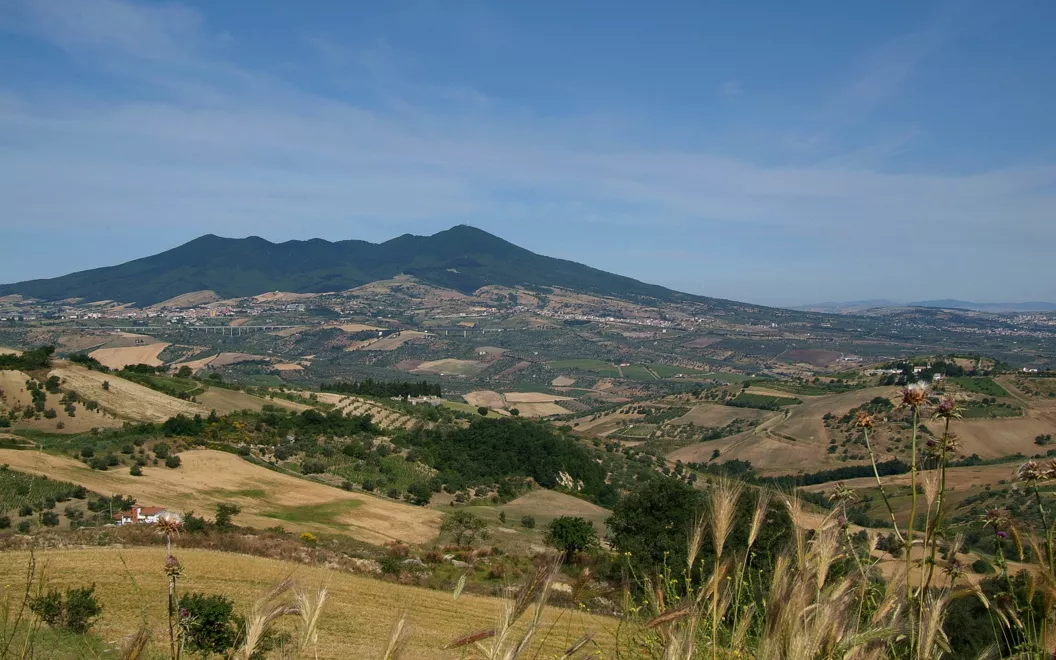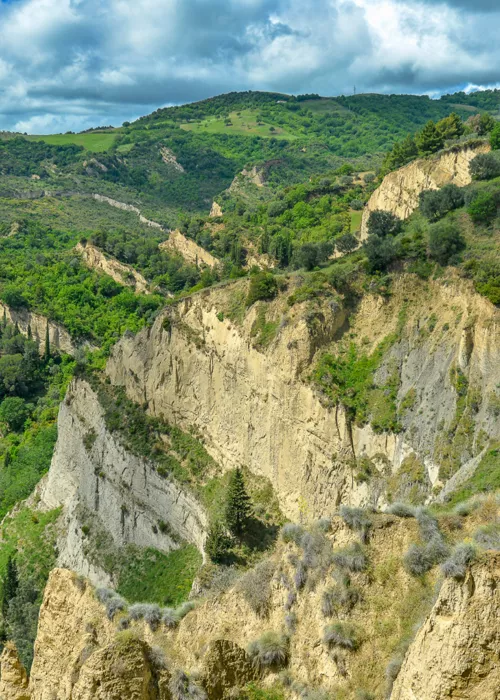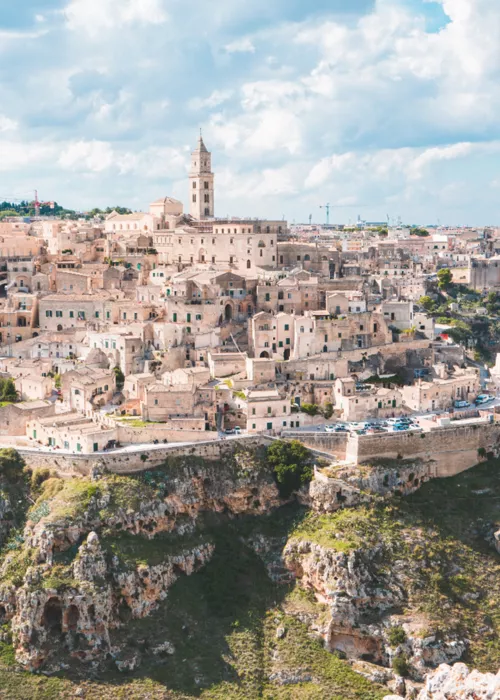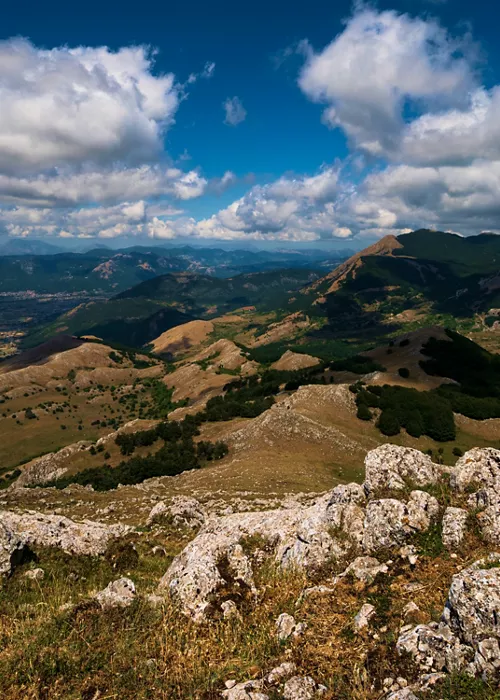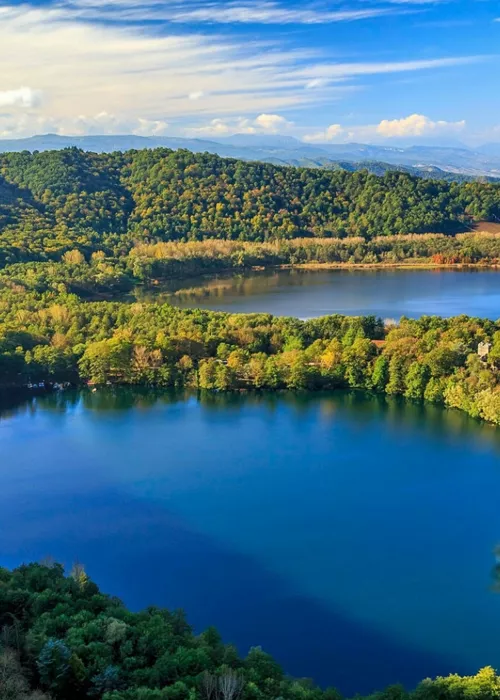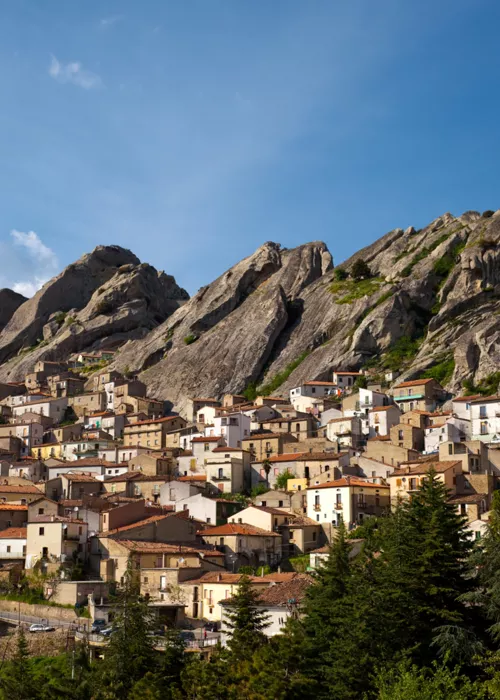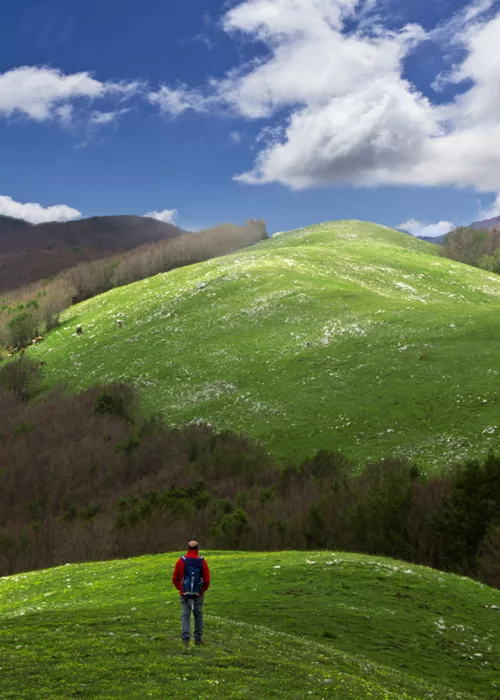Potenza, the showcase of Lucania

Like a medieval village (although the many earthquakes have left the town looking decidedly modern), the historic centre sprawls across the ridge between two valleys. One of these is the Upper Valley of the Basento River, a succession of mountains and hills from which Potenza supplies homes, restaurants and delicatessens with a blaze of flavours: cured meat, cheese, lamb or goat meat and grain-based dishes all dressed with the superb local olive oil and washed down with the equally superb wine. Typical of these places are lampascioni, a kind of wild onion, which you can enjoy fresh or in oil. But now it's time to leave the provincial capital to enjoy the surrounding scenery and sample some of the local produce. The first town you come to is Filiano.
Filiano and pecorino cheese

The name of this small town of less than 3000 inhabitants, which stretches along on the bank of the Imperatrice river, apparently comes from the tradition of spinning wool by local women, a fact that isn't as trivial as it might seem. Here, the locals still make their living from sheep and goat farming, although now this is mainly for cheesemaking. Filiano is today considered the home of the prized PDO pecorino, with its hard, straw-yellow body and herby fragrance that gives this cheese a memorably strong flavour. From here, take the state road 93 to the next Lucanian treasure, Rionero in Vulture.
Rionero in Vulture, so much to see

Acres of vineyards and olive groves surround Rionero, with the ancient Mount Vulture (a dormant volcano) and the woods and lakes of Monticchio in the background adding a fairytale quality to the landscape. But the visual delights are not all that this land has to offer. It is here that, with love and hard work, the elegant and long-aged Aglianico red is produced, as well as some excellent olive oil. All around the area there are mountain pastures, grazing land for the semiwild cattle, sheep and goats whose milk is used to create delicious cheeses, primarily Pecorino and Caciocavallo. Rionero isn't just famous for food and wine, however. Visitors are also attracted by the characteristic charm of this quaint village, clustered around the Mother Church, and the ex-Benedictine abbey in a beautiful setting just outside the centre.
Venosa, city of Horace, wine and the "Incompiuta"

The Archaeological Park, just outside the town, already gives you a clear idea of the history and importance of this place. The ancient Roman colony of Venusia, along the Via Appia, was founded where there was once a settlement inhabited by Apulian communities. It is also known as the birthplace of the illustrious Latin poet Horace.
Today Venosa, one of the most beautiful villages in Italy, is a succession of narrow streets offering glimpses of ancient stone buildings, bas-reliefs, pillars and frontages - the signs of the long and important history we just described. Strolling along Corso Vittorio Emanuele, you'll come to the 15th-century Cathedral of St Andrew and the late medieval castle, now no longer a forbidding fortress - instead, the basement floor houses a fascinating archaeological museum with multimedia exhibits depicting the history of the town.
As for typical Lucanian specialities, Venosa is also known for being the "City of Wine", or rather theAglianico del Vulture DOC, a vintage with more than 2000 years of history that pairs well with roast meat and mature cheese. Why not call in at the Cantina di Venosa to sample their fine Carato Venusio (Aglianico del Vulture Superiore DOCG), ruby red, intense and velvety. But don't forget the Verbo Rosè PGI, also from Aglianico, an elegant wine with hints of cherry, strawberry and raspberry: it is one of the best rosés of recent years.
Just outside the centre, along the Ofantina road, we suggest a visit to the Abbey of the Holy Trinity, one of the most interesting medieval monuments in the whole of southern Italy. The complex covers a large archaeological site comprising two churches: the "old" one founded by the Benedictines in the 11th century on the foundations of an older early Christian church, and the "new" one, with only the floor plan remaining as an indication of how beautiful it may have looked when completed.
Forenza and its food, steeped in history

About twenty kilometres from Venosa is Forenza, visible from afar as it stands proudly on amountain. Surrounded by a dense woodland, this spot was once a refuge for highwaymen and now offers welcome shade on hot summer days. In autumn, the woods are abundant with cardoncelli mushrooms, a delicacy enjoyed since ancient times and found only in these parts.
Forenza is off the beaten track and you'll have to make a special visit to get there - but it's certainly worth it. You'll be instantly enchanted by this stone-built hamlet flooded by dazzling sunlight on fine spring days. It really is a must-see: take a walk through the narrow stone streets with fantastic views and an atmosphere of times gone by. In summer in particular, the air is filled with tempting aromas of cooking from the kitchen windows.
The local cuisine, like the town itself, has humble origins and is deeply rooted in the history of this area. Before you go, make sure you try the mozzarella or fresh ricotta and stock up on scamorza and provolone (mild or spicy, it's delicious served in slices and grilled on the barbecue). The village is also famous for its fine pecorino, with a thick rind, semi-hard body and full flavour and the tasty handmade sausages (including a spicy variant), the handmade pasta and locally-grown pulses, usually eaten in spring.
There is no shortage of traditional baked goods and pastries, such as the u 'cazoun (sweet and sour calzone) eaten during the Christmas period, 'calzoncelli' stuffed with chestnut or sweet chickpeas, or 'crustole' (carteddate), which are pastries drizzled with honey and sprinkled with cinnamon or mulled wine.


